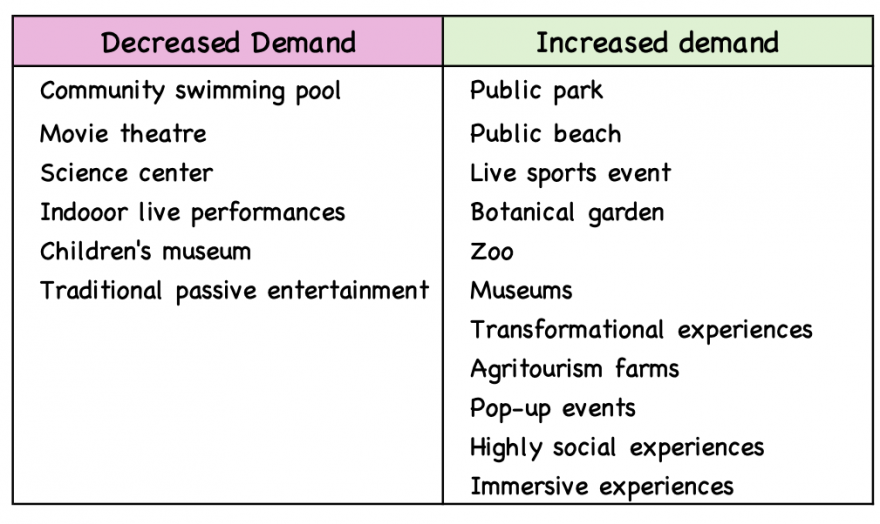
Vol. XXV, No. 12, November 2025
- Editor's corner
- Netflix comes for the competitive socializing market
- The growing trend of smaller restaurant entrees
- Meet Randy at IAAPA
- Are LBE chains taking over the industry?
- Leisure time is a zero-sum game; how much of it will your LBE get?
- Young adults are switching from nightlife to coffee raves & soft clubbing
- Nostalgia is driving menu innovation and appeal
- Are we seeing a permanent post-pandemic redistribution of OOH demand?
Are we seeing a permanent post-pandemic redistribution of OOH demand?
During the height of the Covid pandemic, there were notable changes in people's preferences and behaviors regarding out-of-home leisure attendance. People began preferring to visit outdoor venues, such as zoos, botanical gardens, agritourism farms, and outdoor institutions, over indoor venues.
By this time - over five years since the start of the pandemic - we would expect the demand for different leisure experiences to have long returned to pre-pandemic levels. For example, we would expect people who once enjoyed going to indoor live performances over the zoo to have returned to indoor live performances by now.
It turns out there is a new normal with a “redistribution of demand” affecting many types of cultural venues. IMPACT Experience surveyed people on their likelihood of visiting different venues compared to 2019. For example, they found that people are currently less likely to visit a community swimming pool, movie theater, science center, indoor live performances, or a children's museum than they were in 2019, while now more likely to visit a public park, public beach, sports arena or stadium, botanical garden, zoo, and different types of museums.
IMPACT Experience says their “data suggest visitors have not only adjusted their behaviors in response to the pandemic but have settled into these new preferences as part of a new normal.” They say the pandemic has played a role in reshaping our preferences for various cultural and other experiences over the past five years.
Research by Houlihan Lokey has found a redistribution of demand among more entertainment-oriented venues. They found that demand has moved noticeably toward local and regional entertainment options that offer highly social, face-to-face interaction. There is heightened interest in events and venues that promise not just entertainment but also transformational experiences, such as museums, zoos, and edutainment. In contrast, traditional, indoor, standalone, and passive entertainment venues tend to lag in demand.
Outdoor venues were favored during the immediate post-pandemic period due to health concerns, and this advantage has persisted to some extent. Demand for festivals is robust compared to 2019. Our company's work with agritourism farm clients has found very significant increases in attendance since 2019, with some farms doubling their attendance. And we've previously reported, time spent at live sport events has seen a post-pandemic increase (as IMPACT Experience also found increased interest).
Pop-up and immersive events are significantly more popular now in 2025, as consumers desire limited-time, novel immersive experiences that offer social experiences, FOMO (fear of missing out), and opportunities for discovery - preferences accelerated by pandemic isolation and digital fatigue
In summary, here's how the redistribution of demand for out-of-home leisure, cultural, and entertainment looks in 2025 compared to pre-pandemic 2019.

Subscribe to monthly Leisure eNewsletter
Vol. XXV, No. 12, November 2025
- Editor's corner
- Netflix comes for the competitive socializing market
- The growing trend of smaller restaurant entrees
- Meet Randy at IAAPA
- Are LBE chains taking over the industry?
- Leisure time is a zero-sum game; how much of it will your LBE get?
- Young adults are switching from nightlife to coffee raves & soft clubbing
- Nostalgia is driving menu innovation and appeal
- Are we seeing a permanent post-pandemic redistribution of OOH demand?


